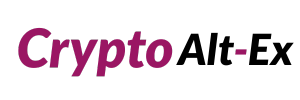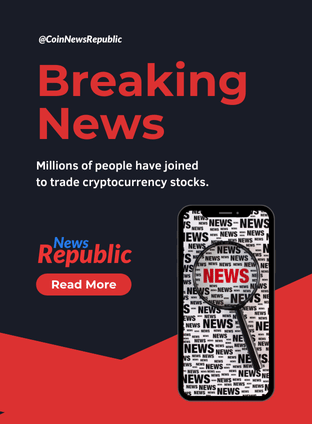The Palais des Festivals in Cannes—temporarily rebranded as “Paris on the Riviera” for four days—has closed its doors on EthCC 8, leaving behind a whirlwind of developer workshops, protocol announcements and side-event deal-making that cemented Ethereum’s status as the world’s most prolific smart-contract laboratory. More than 6,400 builders, investors and policymakers filled the venue from 30 June to 3 July, debating everything from AI-assisted auditors to the politics of danksharding. Yet two themes eclipsed all others: a resurgent, revenue-generating DeFi sector and an intensifying contest among Layer-2 networks vying to own Ethereum’s next billion users.
A Conference Rekindles DeFi Confidence
If 2024 was DeFi’s hangover year, EthCC 8 felt like a long-overdue revival tour. Panels on real-world-asset tokenisation were standing-room only, with Maker, Centrifuge and BlackRock’s inaugural BUIDL fund dissecting their disparate approaches to on-chain collateral. Uniswap Labs engineers revealed preliminary research on “hooks-as-a-service”, a system that lets any protocol embed custom logic—think dynamic fees or AML compliance—directly inside liquidity pools without forking the Uniswap licence. Venture desks at Galaxy Digital and Framework say those disclosures alone sparked two mid-seven-figure term sheets during hallway meetings.
Developers cheered Synthetix founder Kain Warwick’s surprise keynote confirming that Perps V5—already live on Optimism—will deploy to Ethereum in August, abandoning the notion that perpetuals can thrive only on roll-ups. That pivot signals confidence in post-Dencun fee savings and energises SNX stakers hungry for fresh volume.
Layer-2 Fragmentation or Fertile Arms Race?
No topic inspired fiercer debate than roll-ups. Optimism’s Bedrock upgrade has reduced submission costs by ninety percent, yet rival Arbitrum still clears three times more daily transactions. Meanwhile, ZK roll-ups like Scroll and zkSync trumpeted zero-knowledge validity proof audits that promise censorship-resistant finality within forty-five seconds. Starknet demoed its “volition” mode—letting users toggle data availability between on-chain and off-chain blobs—while Base engineers hinted at an EIP-4844 plus eigen-DA roadmap that could undercut all rivals on cost.
The result is a Cambrian explosion of scaling choices. Critics lament fragmentation, but L2Beat founder “Lefteris” Karapetsas argued on a main-stage panel that competition is necessary: “Let fee markets decide winners; Ethereum benefits so long as settlement demand returns to Layer 1. ”Attendance numbers back his point. According to conference organisers, forty-eight separate L2 start-ups hosted side events, up from nineteen last year. Investor interest followed: Messari estimates fifteen Layer-2 seed rounds closed during EthCC 8 week, worth a combined $412 million.
Account Abstraction Steps Out of the Shadows
Away from the headline stages, account abstraction quietly stole developer mindshare. Visa’s Catherine Gu previewed an open-source “AA paymaster toolkit” that lets merchants sponsor gas fees for customers, unlocking true card-like user experiences for on-chain payments. Safe co-founder Richard Meissner revealed Safe 4337, a proposed standard that merges multi-sig security with EIP-4337’s social-recovery UX, all backed by modular signature libraries. Builders see abstraction as the final mile of mainstream adoption, and integration demos drew some of the loudest applause of the conference.
The Numbers Behind EthCC 8
Organisers report more than 500 speakers across 245 side events, spanning DAO governance breakfasts on yachts to zero-knowledge proof hackathons in rented beachfront villas. Ticket prices started at €280, yet secondary markets saw passes change hands for over €1,200 on day three—evidence of demand outstripping capacity and a sign that France’s regulatory warm embrace is paying dividends.
Builders and Regulators Share a Stage
Gary Gensler did not appear, but European policymakers filled the vacuum. Representatives from the European Banking Authority held a standing-room session outlining MiCA’s phased implementation, while members of France’s Autorité des marchés financiers explained how domestic passporting could fast-track licensed DeFi front-ends under MiCA’s pilot regime. Builders lauded Europe’s clarity compared with U.S. enforcement frictions.
Key Takeaways for Investors
DeFi’s revenue is real again. Dune dashboards presented at a community workshop showed protocol fees up fifty-two percent year-to-date, with Pendle, Curve’s crvUSD markets and GMX V2 leading inflows. That cash-flow narrative fuels renewed appetite for governance tokens, evidenced by Maker’s five-year-high price and year-over-year out-performance relative to ETH.
Layer-2 TVL rotation is accelerating. Capital is increasingly chain-agnostic; professional market-makers confirmed they arbitrage across Optimism, Arbitrum and Base without repatriating to L1, a structural shift that can depress Layer 1 gas revenue but expand total settlement demand.
Account abstraction moves from concept to code. Start-ups demoed SDKs that wrap private keys behind passkeys and face ID, ideal for mainstream wallets and potential on-ramps for retail banks dabbling in custody.
Market Reaction: ETH Steady, L2 Tokens Pop
Ether finished the week roughly flat, consolidating above $5,850 as macro volatility weighed on high-beta assets. In contrast, OP and ARB posted six-percent gains, while zkSync’s ZK token added eight percent in the wake of a Canon upgrade preview that halves proof costs.
The Road Ahead: Istanbul and Seoul
EthCC migrates to Istanbul for its 2026 edition—proof that Europe’s warm regulatory climate extends beyond Paris. In parallel, Ethereum developers will gather at Devcon 8 in Seoul this October, where the focus shifts to proto-Danksharding testnets and a potential Dencun++ hard fork. Attendees left Cannes with optimism: the bear-market hush of 2023 has given way to a builder-heavy cycle in which revenue, real-world assets and UX breakthroughs dominate conversation.
Closing Thought
EthCC 8 did more than spotlight scaling and yield; it demonstrated that Ethereum’s most valuable asset is not its market cap but its capacity to convene thousands of disparate minds to ship code, argue policy and raise capital—all within four frenetic days. If Paris 2025 is any gauge, Ethereum’s next bull narrative will not be built on speculation alone but on tangible revenue streams, user-centric wallets and an increasingly modular ecosystem where Layer-2s compete not for memes but for genuine throughput and enterprise adoption. That blueprint—revealed in conference halls and seaside hack spaces—may define the network’s trajectory well beyond the next market cycle.


